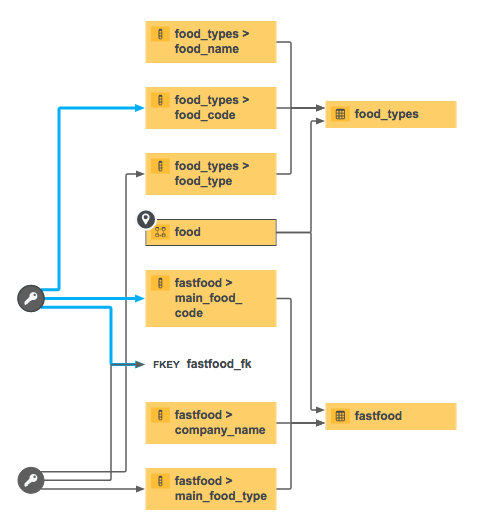A foreign key, in relational databases, is a field in one table that refers to the primary key of another table. A primary key is a column or combination of columns, to uniquely identify table records.
- The table with the primary key is referred to as the referenced table or parent table.
- The table with the foreign key is referred to as the child table.
Foreign Key assets that are created via the Edge registration have a unique full name. For information on the naming convention and examples, go to Edge naming conventions for created assets.
Ingesting foreign keys
In Data Catalog, a foreign key is ingested as an asset of the Foreign Key type. See Foreign Key asset page.
The Foreign Key asset creates relations between columns of different tables. It consists of foreign key mappings between the parent and child table.
In the following example, you see an overview of the tables, columns and a foreign key:

|
|